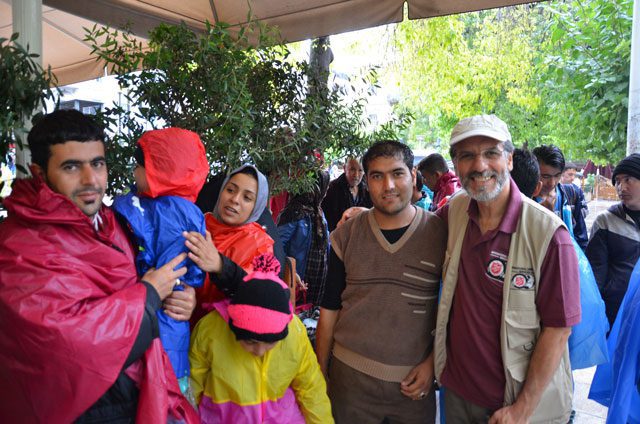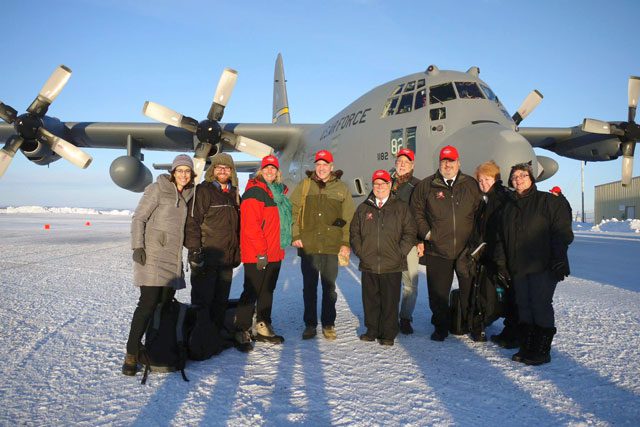Listen to this article
Listen to this article
Loading
Play
Pause
Options
0:00
-:--
1x
Playback Speed- 0.5
- 0.6
- 0.7
- 0.8
- 0.9
- 1
- 1.1
- 1.2
- 1.3
- 1.5
- 2
Audio Language
- English
- French
- German
- Italian
- Spanish
Open text
integrating refugees. the salvation army across europe works to find a home for those on the move. byced hills, major –. europe witnessed the largest migration movement since world war ii in 2015 as more than 900,000 people made the treacherous journey across the mediterranean. roughly 3,500 people were reported dead or missing at sea. a gymnasium turned salvation army emergency shelter for refugees in dresden, germany. the majority of refugees fled conflicts in syria, afghanistan and iraq, while others fled terrorist activity in eritrea and nigeria, and most arrived in greece or italy. but this is not their destination—just the starting point on the uncertain journey northward toward countries such as germany, sweden and norway. the situation is a new challenge for europe and a new experience for the salvation army, which works in over 30 european countries. while some of those countries boast extensive salvation army work that has been established for well over a century, others are relatively young. the ministry in greece, for example, is less than eight years old and the region’s two corps and four officers found themselves at the front line, facing what might be described as a tsunami of humanity. majors polis and maria pantelides mobilized their small team of corps members and local volunteers and distributed 1,500 sandwiches and drinks each week to people arriving in athens from the greek islands. the giving of basic necessities has continued daily and without break since summer. while those with personal funds travel immediately from the port to the northern border with macedonia, those with little find themselves in athen’s city center, hoping to board one of the 300 daily buses that commercial companies operate. thus a salvation army drop-in center was established to offer information and support, along with computer access to help families stay in touch with those left behind. farther north, the route from denmark into sweden may represent the latter stage of the journey, but here salvation army teams from denmark cross the five-mile long øresund bridge into sweden every evening to partner with colleagues from malmö corps. new arrivals are welcomed at the central railway and bus stations, interpreters provide information and asylum seekers are accompanied to reception centers where they register with the migration authorities. swedish corps provide overnight accommodation to those who need it—a place of safety and welcome before the asylum process begins. as part of the refugee response task force established in october 2015, i saw firsthand the diversity of ministry and impact of the salvation army in germany, italy, greece and austria. the task force worked to help share resources and expertise, assess the situation and need, identify opportunities for ministry and allocate resources. for example, in dresden, germany, i visited a temporary shelter that the corps supervised. the converted school sports hall accommodated 40 unaccompanied men, sleeping side by side on camp cots. a small group had been given their own bedroom. an english-speaking man from syria invited us into his room, and as we sat to chat another man brought us coffee to make us welcome. our host said he had received a message from home that his brother had been killed. he pulled his cell phone out and proudly showed us the photo of his brand new baby daughter—born just one day earlier. life changing events punctuated his search for a place of safety and a home away from home. salvation army representatives and refugees at the ideomeni camp in greece. in leipzig, we learned of the furniture project that the corps hoped to start. refugees settling into the community needed furniture to help make a home and the corps felt this was a need the army could meet. resources were needed, both financial and technical. the team felt daunted and unsure how to proceed. we called the salvation army world service office (sawso) at usa national headquarters and connected the corps to finances, advice and guidance of experienced warehousing personnel from ups. salvation army partners had linked hands to build a new home in a strange land. it is clear that this is not a short-term emergency. as the frontline humanitarian response continues, corps and social centers are helping refugees integrate into their new communities. it’s a role that may change the face of salvation army ministry across europe, but it’s a role we are called to fulfill. as another refugee said 2,000 years ago, “i was hungry and you gave me something to eat, i was thirsty and you gave me something to drink, i was a stranger and you invited me in” (matt. 25:35).
Open context player
Close context player
Plays:-Audio plays count
integrating refugees. the salvation army across europe works to find a home for those on the move. byced hills, major –. europe witnessed the largest migration movement since world war ii in 2015 as more than 900,000 people made the treacherous journey across the mediterranean. roughly 3,500 people were reported dead or missing at sea. a gymnasium turned salvation army emergency shelter for refugees in dresden, germany. the majority of refugees fled conflicts in syria, afghanistan and iraq, while others fled terrorist activity in eritrea and nigeria, and most arrived in greece or italy. but this is not their destination—just the starting point on the uncertain journey northward toward countries such as germany, sweden and norway. the situation is a new challenge for europe and a new experience for the salvation army, which works in over 30 european countries. while some of those countries boast extensive salvation army work that has been established for well over a century, others are relatively young. the ministry in greece, for example, is less than eight years old and the region’s two corps and four officers found themselves at the front line, facing what might be described as a tsunami of humanity. majors polis and maria pantelides mobilized their small team of corps members and local volunteers and distributed 1,500 sandwiches and drinks each week to people arriving in athens from the greek islands. the giving of basic necessities has continued daily and without break since summer. while those with personal funds travel immediately from the port to the northern border with macedonia, those with little find themselves in athen’s city center, hoping to board one of the 300 daily buses that commercial companies operate. thus a salvation army drop-in center was established to offer information and support, along with computer access to help families stay in touch with those left behind. farther north, the route from denmark into sweden may represent the latter stage of the journey, but here salvation army teams from denmark cross the five-mile long øresund bridge into sweden every evening to partner with colleagues from malmö corps. new arrivals are welcomed at the central railway and bus stations, interpreters provide information and asylum seekers are accompanied to reception centers where they register with the migration authorities. swedish corps provide overnight accommodation to those who need it—a place of safety and welcome before the asylum process begins. as part of the refugee response task force established in october 2015, i saw firsthand the diversity of ministry and impact of the salvation army in germany, italy, greece and austria. the task force worked to help share resources and expertise, assess the situation and need, identify opportunities for ministry and allocate resources. for example, in dresden, germany, i visited a temporary shelter that the corps supervised. the converted school sports hall accommodated 40 unaccompanied men, sleeping side by side on camp cots. a small group had been given their own bedroom. an english-speaking man from syria invited us into his room, and as we sat to chat another man brought us coffee to make us welcome. our host said he had received a message from home that his brother had been killed. he pulled his cell phone out and proudly showed us the photo of his brand new baby daughter—born just one day earlier. life changing events punctuated his search for a place of safety and a home away from home. salvation army representatives and refugees at the ideomeni camp in greece. in leipzig, we learned of the furniture project that the corps hoped to start. refugees settling into the community needed furniture to help make a home and the corps felt this was a need the army could meet. resources were needed, both financial and technical. the team felt daunted and unsure how to proceed. we called the salvation army world service office (sawso) at usa national headquarters and connected the corps to finances, advice and guidance of experienced warehousing personnel from ups. salvation army partners had linked hands to build a new home in a strange land. it is clear that this is not a short-term emergency. as the frontline humanitarian response continues, corps and social centers are helping refugees integrate into their new communities. it’s a role that may change the face of salvation army ministry across europe, but it’s a role we are called to fulfill. as another refugee said 2,000 years ago, “i was hungry and you gave me something to eat, i was thirsty and you gave me something to drink, i was a stranger and you invited me in” (matt. 25:35).
Listen to this article















